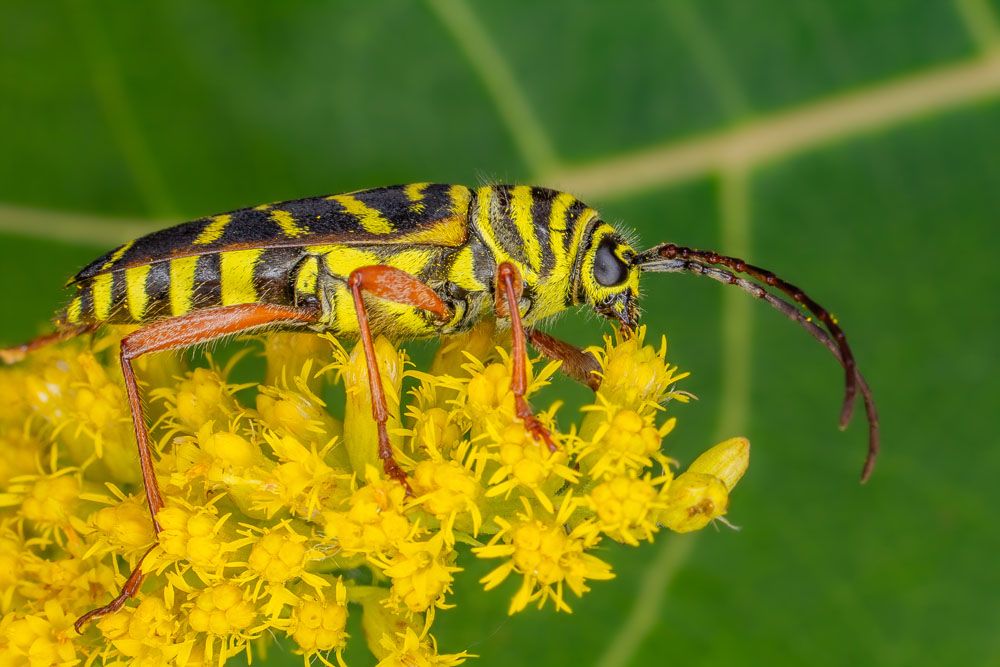
Locust Borer – Megacyllene robiniae
Locust Borer (Megacyllene robiniae)
Latin Name: Megacyllene robiniae
Common Name: Locust Borer
Appearance:
- Adult beetles are around 3/4 inches long. Their jet-black background is emphasized by vivid yellow bands that run over the thorax and wing covers, with a W-shaped third band on the wings.
- The legs are reddish, while the antennae are black and relatively long.
- They are similar to the painted hickory borer, except they are active in the fall rather than the spring. Legless, white, robust, and about 1 inch long, full-grown larvae have no legs.
